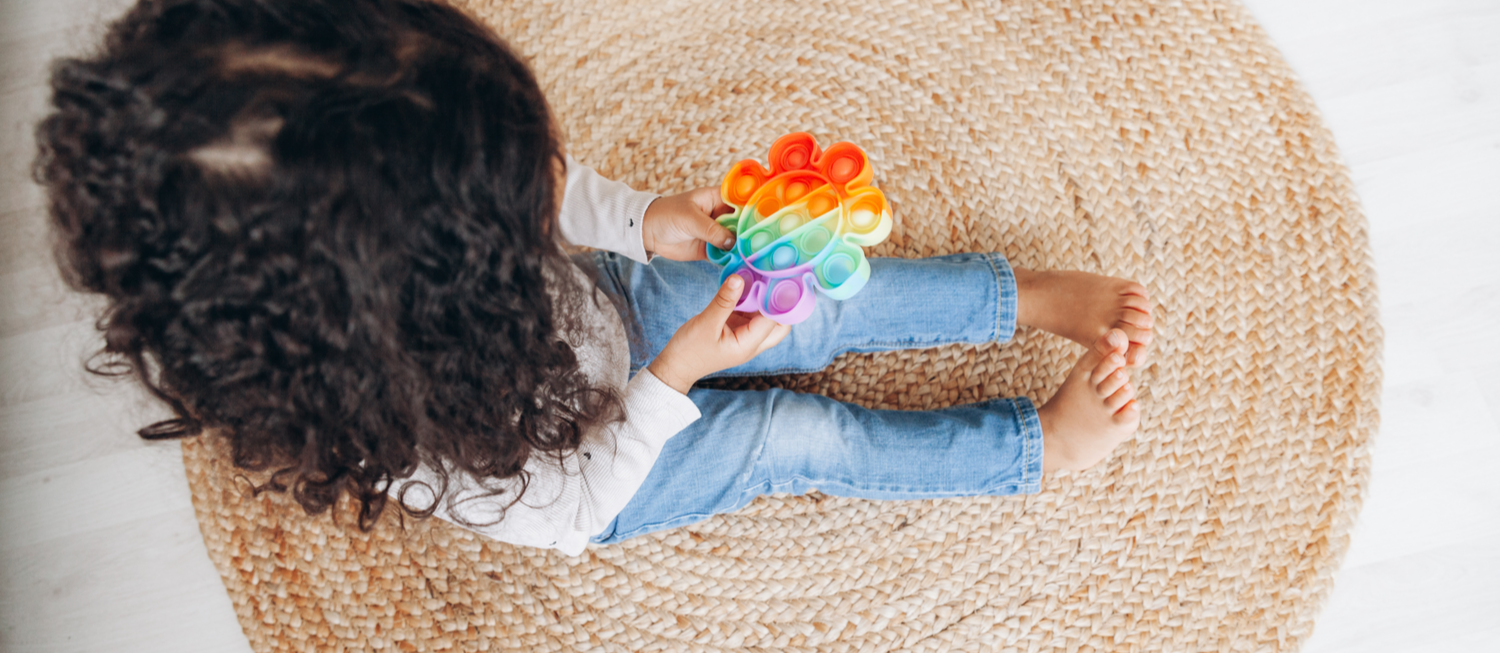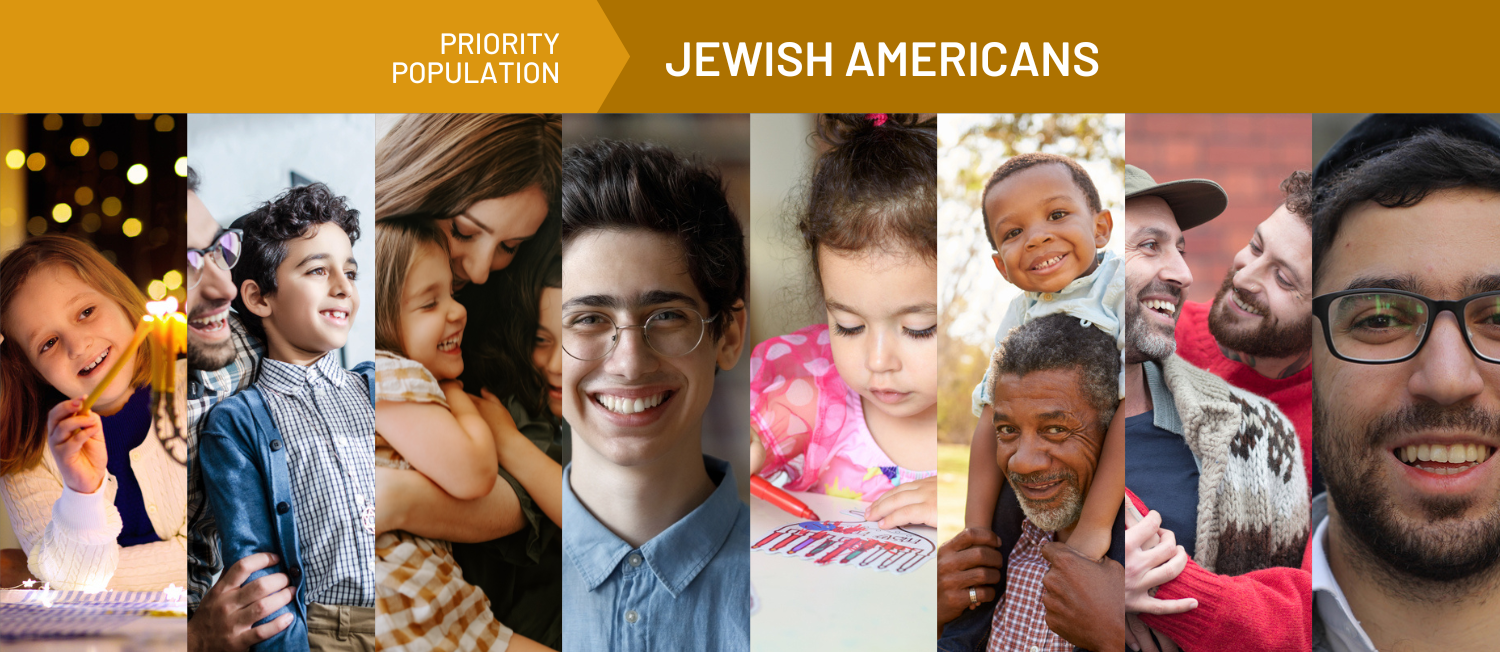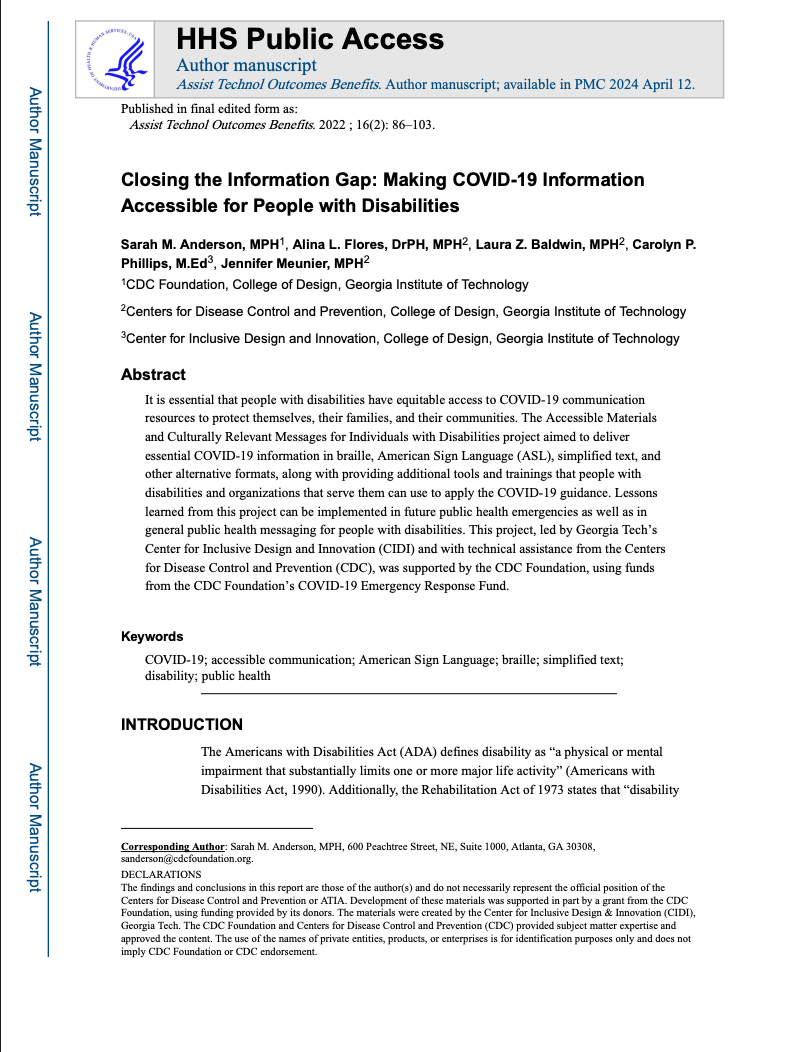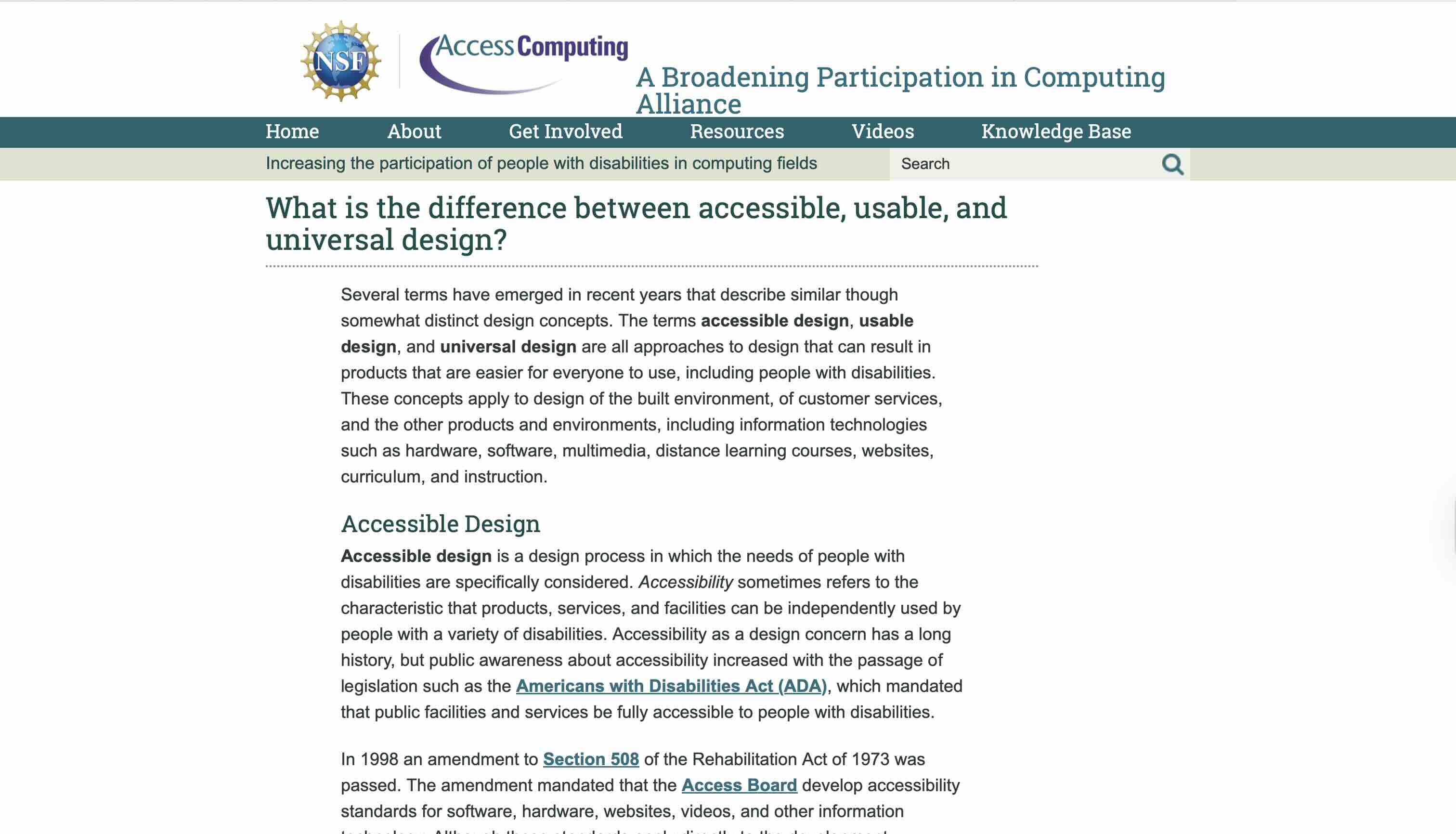People with Disabilities
The phrase “people with disabilities” refers to diverse groups of people with physical, developmental, psychological, vision, hearing, and other disabilities. Not all disabilities are visible. According to the American Disabilities Act, a person with a disability is someone who has a physical or mental impairment that limits one or more major life activities, has a history or record of this type of impairment, and/or is perceived by others to have this type of impairment. Activism by the disabled people—including the Deaf and Hard of Hearing community, and the Autistic community—has expanded our understanding and definitions of disability beyond impairment. Disability is more accurately being redefined in terms of differences, required accommodations, personal lived experience, and identity. An important part of this shift, many disabled people have shifted toward using disability-first language (i.e. a disabled person, an Autistic person, a Deaf person), though person-first language is still preferred in some communities and in reference to some conditions (i.e. a person living with a mental health condition, a person with a TBI). In general, it is best practice to refer to a disabled person in the way they refer to themselves.
People with disabilities belong everywhere, and deserve equitable access to employment, education, housing, healthcare, and recreation. They have made immense contributions to all aspects of life and culture in the United States, despite being historically excluded from many of the fields they impacted. Today, 26% of adults in the U.S. (61 million people) live with a disability. The disabled community has made great strides in advancing accessibility and equity, but disabled people still face disproportionately negative health and mental health outcomes. Long histories of misunderstanding, abuse, lack of care, stigmatization, discrimination, and unequal rights have created deep inequities for people with disabilities. Disabled people are significantly more likely to live in poverty, experience trauma, face barriers to care, and struggle with suicidal ideation than their able-bodied peers. Disabled people who are living in poverty, located in rural communities, LGBTQ+, Black, Indigenous, and/or of color often struggle the most to thrive due to compounding marginalizations.
Disabled people—especially disabled people of color and LGBTQ+ disabled people—are working to push disability equity to the forefront of justice movements, where intersectionality with disability is often overlooked and accessibility is often an afterthought. Misunderstanding, stigma, and exclusion still inhibit progress in all aspects of disability equity, from education and employment, to housing, healthcare, mental healthcare, transportation, and recreation. People with disabilities that are considered rare, complex, and/or “difficult” to accommodate are often most misunderstood and excluded. People with invisible disabilities frequently struggle with both exclusion from able-bodied people and other disabled people, due to their disability and needs not being immediately obvious. Progress with accessibility and disability accommodations are often slowest in rural communities and communities with high rates of poverty.
Partnering with disabled people to achieve health equity requires uprooting the ableist systems that perpetuate their exploitation, exclusion, and abuse. Institutionalizing and operationalizing accessibility and disability justice throughout all leadership levels of all sectors will require organizations, allies, and systems to deeply center and follow the leadership of disabled people. Justice and equity work must prioritize intersectionality, especially disabled people of color and LGBTQ+ disabled people. Allies should start by recognizing that disability is a complex, nuanced, deeply personal experience, and that change will require many diverse disabled voices. Community-led processes, self-representation, and centering the voices of people with disabilities—including invisible disabilities—are a few effective tactics communities can leverage to advance equity and well-being for disabled people.
See also: accessibility, mental and behavioral health, neurodiversity, Autism, eating disorders, veterans, older adults
Resources & Tools
Integrated Care for People with Disabilities: Lessons from an Accountable Care Organization
Story - Written
Brought to you by DASH
Increasing the Physical Accessibility of Health Care Facilities
Resource - Journal Article
Brought to you by CMS
Davidson Walks and Rolls: Active Transportation Master Plan
Resource - Assessment
Brought to you by Health Impact Project
Published on 12/31/2012
Global Report on Health Equity for Persons with Disabilities
Resource - Report
Brought to you by WHO
Loch Haven Park Improvement Plan
Resource - Assessment
Brought to you by East Central Florida Regional Planning Council
Planning for Parks, Green Space, and Trails in Greenville's West Side
Resource - Assessment
Brought to you by Health Impact Project
Deviancy, Dependency, and Disability: The Forgotten History of Eugenics and Mass Incarceration
Resource - Journal Article
Getting the Care You Need: Guide for People with Disabilities
Resource - Guide/handbook
Brought to you by CMS
Fort McPherson Interim Zoning
Resource - Assessment
Brought to you by Health Impact Project
Published on 12/31/2009
Closing the Information Gap: Making COVID-19 Information Accessible for People with Disabilities
Resource - Journal Article
Brought to you by NLM
Loch Haven Park Improvement Plan
Resource - Assessment
Brought to you by Health Impact Project
Published on 01/01/2013
Legalizing Medical Marijuana Through the Utah Medical Cannabis Act
Resource - Assessment
Brought to you by Health Impact Project
Published on 11/30/2017
Johns Hopkins Disability Health Research Center
Resource - Website/webpage
Brought to you by Johns Hopkins University
Trauma Experiences of People With an Intellectual Disability and Their Implications: A Scoping Review
Resource - Journal Article
‘I Am Not The Doctor For You’: Physicians’ Attitudes About Caring For People With Disabilities
Resource - Journal Article
Brought to you by Health Affairs
Vehicle-Pedestrian Injury Collisions in San Francisco's Central Corridor
Resource - Assessment
Brought to you by Health Impact Project
Published on 01/01/2013
Universal Design in Single-Family Housing in Davidson, North Carolina
Resource - Assessment
Brought to you by Health Impact Project
Roundabout at 53rd Street and West Hills Road
Resource - Assessment
Brought to you by Health Impact Project
COVID-19 Continues to Highlight Gaps in Accessibility for People with Disabilities
Resource - Blog
Brought to you by Johns Hopkins University
How to Improve Physical Accessibility at your Health Care Facility
Resource - Guide/handbook
Brought to you by CMS
Gender Variance Among Youth with Autism Spectrum Disorders: A Retrospective Chart Review
Resource - Journal Article
Implications of Internalised Ableism for the Health and Wellbeing of Disabled Young People
Resource - Journal Article
Brought to you by John Wiley & Sons, Inc.
Connecting Rural Communities: U.S. 30 and Rainier Veterans Way Crossing
Resource - Assessment
Brought to you by Health Impact Project
Published on 07/31/2015
Celebrating and Supporting LGBTQ+ People with Intellectual and Developmental Disabilities
Resource - Journal Article
Innovative Models in Health and Housing
Resource - Report
Brought to you by The California Endowment
Queer, Disabled People Like Me Are Excluded From LGBTQ+ Spaces – It Is Dividing Our Community
Resource - Journal Article
Is Part of Ageism Actually Ableism?
Resource - Journal Article
Brought to you by Cambridge University Press and Assessment
Disability Rates Among Working-Age Adults Are Shaped by Race, Place, and Education
Resource - Journal Article
Brought to you by Brookings
Study Affirms LGBTQ People are More Likely to Have a Disability than the General Population
Resource - Journal Article
LGBTQ Vets Discharged Under 'Don't Ask, Don't Tell' Have New Chance For Full Benefits
Resource - Journal Article
Healthy People 2030: People With Disabilities
Resource - Assessment
Brought to you by U.S. Department of Health and Human Services
Minding The Access Gap: Addressing Both The Digital And Transportation Divides To Improve Outcomes
Resource - Journal Article
Brought to you by Health Affairs
Accommodating Seniors and People With Disabilities: Model Policies and Procedures for Primary Care Practices
Resource - Journal Article
Forced Sterilization of Disabled People in the United States
Resource - Report
Brought to you by National Women's Law Center
Pathways to Partnership: Early Childhood
Resource - Guide/handbook
Brought to you by SchoolHouse Connection
Connecting Public Housing and Health: A Health Impact Assessment of HUD’s Designated Housing Rule
Resource - Assessment
Brought to you by RWJF
Michigan Street Corridor Plan: A Health Impact Assessment
Resource - Assessment
Brought to you by City of Grand Rapids
University Disability Inclusion Dashboard
Resource - Assessment
Brought to you by Johns Hopkins University
9 Ways We Can Make Social Justice Movements Less Elitist and More Accessible
Resource - Journal Article
Improving Communication Access for Individuals Who Are Deaf or Hard of Hearing
Resource - Guide/handbook
Brought to you by OMH
Active Design Supplement: Promoting Safety
Resource - Guide/handbook
Brought to you by Center for Active Design
How Steep Is That Sidewalk? A Digital Map for People With Disabilities
Resource - Journal Article
Brought to you by Yes! Magazine
Disability Mortality Disparity: Risk Of Mortality For Disabled Adults Nearly Twice That For Nondisabled Adults, 2008–19
Resource - Journal Article
Brought to you by Health Affairs
George Road Complete Streets Implementation Plan
Resource - Assessment
Brought to you by Health Impact Project
Kings Ridge Apartments
Resource - Assessment
Brought to you by Health Impact Project
Published on 01/01/2012
Would People with Intellectual and Developmental Disabilities Benefit from Being Designated “Underserved”?
Resource - Journal Article
Brought to you by AMA
Mental Illness and Reduction of Gun Violence and Suicide: Bringing Epidemiologic Research to Policy
Resource - Journal Article
The Pandemic’s Silver Linings: Moving Toward a More Inclusive New Normal for People with Disabilities
Resource - Journal Article
Brought to you by Network for Public Health Law
Addressing Intellectual and Developmental Disabilities as a Health Equity Imperative: A Primer for Public Health Professionals
Resource
Brought to you by APHA
Charlotte Area Transit System Blue Line Extension
Resource - Assessment
Brought to you by Health Impact Project
Published on 06/30/2015
Autism Spectrum Disorders in Gender Dysphoric Children and Adolescents
Resource - Journal Article
Brought to you by Springer
Improving Health Care for Adults With Disabilities: An Overview of Federal Data Sources
Resource - Report
Brought to you by CMS
Genesee Valley Greenway
Resource - Assessment
Brought to you by Health Impact Project
Published on 05/31/2018
Hoboken Stormwater Management Plan and Ordinance
Resource - Assessment
Brought to you by Health Impact Project
Published on 09/18/2016
Atlanta Regional Plan 2040
Resource - Assessment
Brought to you by Georgia Institute of Technology School of Architecture
Racial/Ethnic Disparities in Disability Prevalence
Resource - Journal Article
Brought to you by Springer
Improving Communication Access for Individuals Who are Blind or Have Low Vision
Resource - Guide/handbook
Brought to you by CMS
Rochester Bike Share
Resource - Assessment
Brought to you by Health Impact Project
Published on 05/31/2018
Food Deserts in Tennessee-HIA of SB 1176
Resource - Assessment
Brought to you by Health Impact Project
Neenah-Menasha Sewerage Commission Biosolids Storage Facility
Resource - Assessment
Brought to you by Health Impact Project
Metro Westside Subway Extension (Wilshire Corridor)
Resource - Assessment
Brought to you by Health Impact Project
Published on 01/01/2012
Benton Accessory Dwelling Units
Resource - Assessment
Brought to you by Health Impact Project
Published on 01/02/2010
Disability Rights and Heritable Genome Editing: Resources for Teaching and Learning
Resource - Data Bank/repository
Improving Accessibility and Digital Inclusion for Those With Physical Disabilities
Resource - Guide/handbook
ADA Requirements: Wheelchairs, Mobility Aids, and Other Power-Driven Mobility Devices
Resource - Guide/handbook
Education to Identify and Combat Racial Bias in Pain Treatment
Resource - Journal Article
Brought to you by AMA
King Street Station Multimodal Hub
Resource - Assessment
Brought to you by Health Impact Project
Published on 04/30/2011
The Art of Flourishing: Conversations on Disability
Resource - Website/webpage
Brought to you by The Hastings Center
BIPOC? Latinx? Here's How to Describe People Accurately
Resource - Guide/handbook
Brought to you by NPR
How Does Disability Affect Access to Health Care for Dual Eligible Beneficiaries?
Resource - Report
Brought to you by CMS
MacArthur BART Transit Village
Resource - Assessment
Brought to you by Health Impact Project
Published on 12/31/2006
Trauma and Ableism as Social Determinant of Health for People with Intellectual and Developmental Disabilities
Resource - Webinar
Brought to you by YouTube
Published on 03/08/2023
Current Approaches to Measuring Disability Status in Federal Surveys May Limit Understanding of Economic and Health Disparities
Resource
Brought to you by Urban Institute
Benton Accessory Dwelling Units
Resource - Assessment
Brought to you by Benton County Health Department
Upstreaming and Normalizing Advance Care Planning Conversations—A Public Health Approach
Resource - Journal Article
Brought to you by MDPI
Milton U.S. 7 Corridor
Resource - Assessment
Brought to you by Health Impact Project
Published on 04/30/2015
End the War on Black Health and Black Disabled People
Resource - Journal Article
Brought to you by M4BL
Understanding the Policing of Black, Disabled Bodies
Resource - Journal Article
Brought to you by Center for American Progress
What It's Like to Be Black and Disabled in America
Resource - Journal Article
Brought to you by The Atlantic
Why Is It So Hard To Find a Therapist? These Barriers Stop Washingtonians From Getting Help
Story - Written
Brought to you by The Seattle Times
Churches Don’t Have to Be Accessible. That’s Bad News for Voters.
Story - Written
Brought to you by Mother Jones
Stop Conflating Mass Shootings With Mental Illness
Story - Written
Brought to you by The Seattle Times
Elections Have Gotten More Accessible for Disabled Voters, but Gaps Remain
Story - Written
Brought to you by NYT
Disability Justice Is LGBT Justice: A Conversation With Movement Leaders
Story - Audio
Brought to you by Center for American Progress
Including Disability in All Health Equity Efforts: An Urgent Call to Action
Story - Written
Brought to you by The Lancet
Telemental Health Provides Opportunity to Improve Population Mental Health
Story
-
 Original
Original
Brought to you by Community Commons
Navigating Health Care with a Disability: Our Stories, a Focus on People with Disabilities
Story - Video
Brought to you by YouTube
COVID-19 Response: Digital Accessibility and Other Best Practices for Remote Work
Tool - Toolkit/toolbox
Practical Recommendations for Enhancing the Care of Patients with Disability
Tool - Workshop/training
Data & Metrics
Related Topics


















































































































































































































